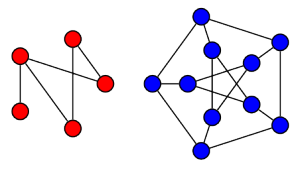Hello everyone!
Sorry for missing last week's update. Life got in the way.
This week, I'd like to talk about statistics. A lot of statistics courses focus on how to apply techniques to problems. If you've studied any statistics, you're probably familiar with things like t-tests,  -squared values, and lots of other esoteric tools. But very few courses go into where those techniques come from or why they work. Today, we'll look at the normal distribution (or bell curve).
-squared values, and lots of other esoteric tools. But very few courses go into where those techniques come from or why they work. Today, we'll look at the normal distribution (or bell curve).
Let's begin with a simple game. Say we have a fair  -sided die. Then any number from one to six is equally likely to come up. We can represent this with a histogram, as below.
-sided die. Then any number from one to six is equally likely to come up. We can represent this with a histogram, as below.![]() Continue reading Normal Distribution
Continue reading Normal Distribution



